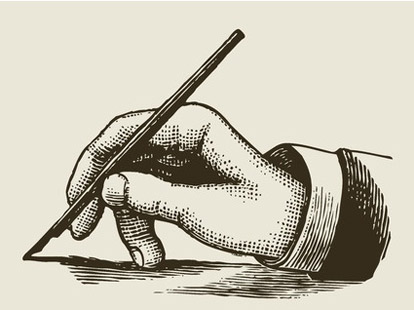SAT写作官方样题考生范文:Why Literature Matters(8)
- 2017年04月27日14:32 来源:小站教育作者:小站SAT编辑
- 参与(0) 阅读(12747)
本文给大家分享SAT写作样题“Why Literature Matters”的一篇范文,本文得分4 3 4,作文题目及更多分数段范文,请点击入口。
Sample 8 Scores: 4/3/4
In the article, “Why Literature Matters” by Dana Gioia, Gioia makes an argument claiming that the levels of interest young Americans have shown in art in recent years have declined and that this trend is a severe problem with broad consequences. Strategies Gioia employs to support his argument include citation of compelling polls, reports made by prominent organizations that have issued studies, and a quotation from a prominent author. Gioia’s overall purpose in writing this article appears to be to draw attention towards shortcomings in American participation in the arts. His primary audience would be the American public in general with a significant focus on millenials.
In his introduction paragraph, Gioia employs a distinct contrast with several listed positive changes in American life such as increased college attendance and increases in income, with the focus of his article: the fact that the interest young Americans show in art has declined. This tool is utilized to establish an emphasis on his primary point by highlighting it as a negative development relative to other changes in American life. This literary tool serves a strong purpose by acting as a vehicle to draw the audience into the principle issue addressed by the writing.
In paragraph 5, Gioia utilizes a synergistic reference to two separate sources of information that serves to provide a stronger compilation of support for his main topic. By citing a quotation from author Daniel Pinks who states, that the talents individuals require for success in the 21st Century are not, “linear, logical, analytic talents,” but ones that provide, “the ability to create artistic and emotional beauty, to detect patterns and opportunities,” and “to craft a satisfying narrative,” Gioia is able to build his point with the agreement of a respected individual. He then immediately follows with a statement that business leaders like to see, “imagination, creativity, and higher order thinking” as qualities for individuals in management positions. This dual utilization of claims from two separate sources conveys to Gioia’s audience the sense that the skills built through immersion in the arts are vital to succeeding in the modern workplace which aids in logically leading his audience to the conclusion that a loss of experience with the arts may foreshadow troubling results.
In paragraph 6, Gioia follows up on the point established in paragraph 5 by introducing a negative example of the consequences of loss of the arts with a focus on literacy. Gioia cites a 2001 poll on the National Association of American Manufactures stating stating that poor reading skills ranked second among its employees surveyed for skill deficiencies while 38% of employees believed local schools inadequately taught reading comprehension. Gioias presentation of a numerical statistic based on a major employer adds significant logical weight to his argument by providing an example of the effects of a deficit in experience with art and literature. This may effect his audience by providing a more accurrate depiction of the true problems caused by disconnection with arts while possibly choosing an example they could personally relate to.
Overall, Gioia provides an strong logical argument that disconnection with the arts is troubling for America. He employs strong logical connections and establishes real-world foundations for his point.
This paper scored a 4/3/4.
Reading—4: This response demonstrates thorough comprehension of the source text and illustrates an understanding of the interrelation between the central idea and important details in Gioia’s piece. The writer accurately paraphrases the central idea of Gioia’s text (the levels of interest young Americans have shown in art in recent years have declined and that this trend is a severe problem with broad consequences). The writer then exhibits an understanding of the details in Gioia’s text and how they work together to convey the main point (Gioia is able to build his point; He then immediately follows with...; In paragraph 6, Gioia follows up on the point established in paragraph 5...). The response is also free of errors of fact or interpretation. Overall, this response demonstrates advanced reading comprehension.
Analysis—3: The response demonstrates good understanding of the analytical task by offering an effective analysis of the source text. The writer is able to move past simple identification of and assertions about the analytical elements in Gioia’s text to discuss how these elements contribute to Gioia’s argument. For example, the writer identifies the distinct contrast that Gioia establishes early in the passage between positive changes in American life and the fact that the interest young Americans show in art has declined. The writer then explains that Gioia uses this contrast to establish an emphasis on his primary point by highlighting it as a negative development. The writer then competently evaluates the effect of this element of Gioia’s text by explaining that this literary tool serves a strong purpose by acting as a vehicle to draw the audience into the principle issue addressed by the writing. This pattern of effective analysis continues throughout the remainder of the response and indicates proficient analytical skill. The writer clearly can delineate and evaluate the impact of Gioia’s argumentative moves, but this analysis lacks the thoroughness and completeness needed to receive a higher score. For example, there is no indication of how or why these moves are effective.
Writing—4: The writer demonstrates highly effective use and command of language in this cohesive response. The response includes a precise central claim (Strategies Gioia employs to support his argument include citation of compelling polls, reports made by prominent organizations that have issued studies, and a quotation from a prominent author). The skillful introduction establishes the framework for the writer’s organizational structure, which is followed throughout the response. Although the subsequent discussion is not laid out as explicitly as the simple three-pronged thesis suggests, each body paragraph remains on-topic and demonstrates a deliberate progression of ideas, and the response as a whole remains focused and cohesive. The response contains many examples of sophisticated sentence structure, notable vocabulary, and precise word choice (This dual utilization of claims from two separate sources conveys to Gioia’s audience the sense that the skills built through immersion in the arts are vital to succeeding in the modern workplace which aids in logically leading his audience to the conclusion that a loss of experience with the arts may foreshadow troubling results). Overall, this response demonstrates advanced writing ability.

























